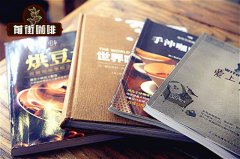Ranking of domestic coffee brands-development trend of Chinese coffee beans-reasons for cheap sale of domestic coffee beans

Professional coffee knowledge exchange more coffee bean information please follow the coffee workshop (Wechat official account cafe_style)
The output of Pu'er domestic coffee beans reached the highest in 2016, reaching 900000 bags. The coffee grown in Pu'er has a short history and only became popular in the 1980s. Most of the varieties should be Kadim. The second and third in Baoshan are Lincang, the fourth is Dehong, and the fifth is Banna. Honghe, Wenshan, Dali and Nujiang also have a small output. Pu'er has the largest planting area of 40,000 hectares, followed by Lincang, followed by Banna, Baoshan, Dali, Dehong, Nujiang, Honghe and Wenshan.
China's acreage has been growing steadily from 2008 to 2015, and the acreage decreased during the season of 2015. The main reason is that the prices of raw beans and red fruits of our Chinese coffee are not going up, which are much lower than the futures prices of the New York Stock Exchange. In this way, farmers will not be able to make ends meet when they grow coffee, so they cut down a large number of coffee trees, especially the so-called [old varieties], which are low-yielding and prone to disease, which are actually iron pickup and bourbon varieties, leaving high-yielding Kadim trees. The output of domestic coffee beans in China has shown a steady growth trend since 2008. The main reason is not because of domestic consumption power.
Since 2005, China's total coffee export has been showing a steady growth trend. By 2015, it had plummeted from 1.75 million bags in 2014 to 1.1 million bags. It jumped to 1.82 million bags in 2016 and fell back to 1.19 million bags in 2017. The sharp fluctuation of this ECG pattern precisely shows that there has been a serious miserable situation in China's coffee industry since 2014. The cause is either climate change caused by environmental pollution or carelessness in the process of growing and picking coffee. As for the political and economic aspects, Huaxia does not comment much. In the future of China's coffee export industry, we need to educate coffee farmers to plant high-quality coffee, and we also need to raise the prices of red fruits and raw beans, so as to enhance coffee farmers' confidence in coffee cultivation, and the most important thing is to make them feel at ease to grow coffee. this requires the attention of the relevant departments of the entire coffee industry chain and the whole society.
The distribution of coffee exported by various customs is extremely out of balance. Nearly 3/4 of the coffee beans are exported from Guangdong Huangpu Customs, followed by Shenzhen. In other words, almost most of the coffee produced in China is exported from Guangdong. Why? Yunnan accounts for 99% of the national output of coffee, why not the majority of exports in Yunnan? There is only one answer, that is, most of the coffee exported by China is not raw coffee beans, but coffee processed products, such as baked beans, instant or three-in-one, and so on. In this way, it is a serious blow to the income of coffee farmers. the more middlemen, the lower the price of raw beans received from coffee farmers, because roasters or processors need to reduce costs and squeeze the vital interests of coffee farmers. Taking a comprehensive view of the world coffee pattern, we can see that the major coffee producing countries mainly export raw beans, and only China exports coffee derivatives, which is unhealthy. In the long run, it will endanger the whole Chinese coffee economy. More seriously, China's coffee economy will gradually perish. Therefore, the relevant departments and the whole society need to promote the export volume of raw beans of the motherland, increase the income of coffee farmers, ensure the lives of people in the producing areas, and increase the coffee consumption capacity of the country. I believe that the motherland can do it.
Although boutique coffee has become popular in China in recent years, most boutique coffee practitioners are swindling around the country with a series of brainwashing pyramid certificates issued by NGO, which serves the interests of European and American countries. Some raw bean merchants are in cahoots, and imported Chen beans are sold at high prices in China, creating a vicious circle that is not conducive to the benign development of China's coffee industry. From the bar chart above, we can see clearly that since 2012, the amount of coffee imported from abroad is like our own domestic coffee production, by the trend of years, this is the so-called joint effect. The relationship between domestic coffee production and imports from other countries is very close. The third wave of boutique coffee pays attention to tasting the oneness of different producing areas, manors and tree species. As Chinese coffee people, of course, they welcome the flavor coffee from different producing areas to satisfy the spiritual taste buds of their own consumers, but it is also our voice: we yearn for fresh coffee raw beans! The number of imported beans declined in 2017, and if imports are similar or decline in 2018, it will be the spring of our own coffee. Chinese coffee is really delicious, please don't use the western flavor system to deny your own coffee!
China's coffee consumption has been growing steadily since 2013, which is a good thing! We only hope that this steady growth will be maintained in the future, rather than ups and downs. In addition, Chinese consumers need a cup of coffee with healthy, delicious and fresh ingredients.
The following data are provided by the Chinese Customs
In the three years from 2015 to 2017, exports of coffee-based drinks (including three-in-one) and raw coffee beans reached the highest level in 2016 and declined in 2017. The export volume of instant coffee and baked beans is increasing year by year.
During the three years from 2015 to 2017, imports of raw beans declined slightly, imports of baked beans increased, and coffee-based drinks rose in 2016 and decreased in 2017. The import of instant coffee showed an upward trend.
Comparison of Chinese coffee exports from 2015 to 2017. The export of raw beans is the most and the instant export is the least. Did you find a very interesting phenomenon? Which side do you believe?
Comparison of China's coffee imports from 2015 to 2017. How many raw beans are imported? Oh yeah? As you can imagine, when Lucy gave a speech, the audience's expression at the meeting should be quite confused. I really want to know what Lucy is saying.
Brand recommendation of domestic coffee beans
Qianjie Coffee roasted domestic coffee beans-Yunnan small grain iron pickup coffee has a full guarantee in brand and quality. And more importantly, the performance-to-price ratio is extremely high, each pack of 227 grams, the price is only about 69 yuan. According to the calculation of 15 grams of coffee beans per cup of coffee, a bag of coffee can make 15 cups of coffee, which costs only about 5 yuan per cup, which is recommended by conscience compared to the price of tens of yuan a cup sold in a coffee shop.
Qianjie coffee: Guangzhou bakery, the store is small but a variety of beans, you can find a variety of unknown beans, but also provide online store services. Https://shop104210103.taobao.com
Important Notice :
前街咖啡 FrontStreet Coffee has moved to new addredd:
FrontStreet Coffee Address: 315,Donghua East Road,GuangZhou
Tel:020 38364473
- Prev

Current situation of coffee bean cultivation in China. How much is a pack of domestic coffee beans? which brand of domestic coffee is good?
Professional coffee knowledge exchange more coffee bean information please follow the coffee workshop (Wechat official account cafe_style) Pu'er City in Yunnan Province is the largest producer of domestic coffee beans in China, has been awarded the coffee capital of China, with a planting area of more than 1.4 million mu, far from being comparable to the intensive cultivation of small farmers in Taiwan. The output of coffee beans in Yunnan in the new season is 100000 tons. In addition to supplying foreign chain coffee brand stars
- Next

Introduction of domestic coffee beans _ origin of Chinese coffee beans _ how much is a cup of Yunnan small-grain coffee
Professional coffee knowledge exchange more coffee bean information please follow the coffee workshop (Wechat official account cafe_style) Yunnan small grain coffee belongs to Rubiaceae, mainly grown in Lincang, Baoshan, Pu'er, Dehong, Nujiang, Xishuangbanna and other places. Small-grain coffee originated in Ethiopia and Arabian Peninsula, and was introduced into China by the British until 1892.
Related
- Detailed explanation of Jadeite planting Land in Panamanian Jadeite Manor introduction to the grading system of Jadeite competitive bidding, Red bid, Green bid and Rose Summer
- Story of Coffee planting in Brenka region of Costa Rica Stonehenge Manor anaerobic heavy honey treatment of flavor mouth
- What's on the barrel of Blue Mountain Coffee beans?
- Can American coffee also pull flowers? How to use hot American style to pull out a good-looking pattern?
- Can you make a cold extract with coffee beans? What is the right proportion for cold-extracted coffee formula?
- Indonesian PWN Gold Mandrine Coffee Origin Features Flavor How to Chong? Mandolin coffee is American.
- A brief introduction to the flavor characteristics of Brazilian yellow bourbon coffee beans
- What is the effect of different water quality on the flavor of cold-extracted coffee? What kind of water is best for brewing coffee?
- Why do you think of Rose Summer whenever you mention Panamanian coffee?
- Introduction to the characteristics of authentic blue mountain coffee bean producing areas? What is the CIB Coffee Authority in Jamaica?

